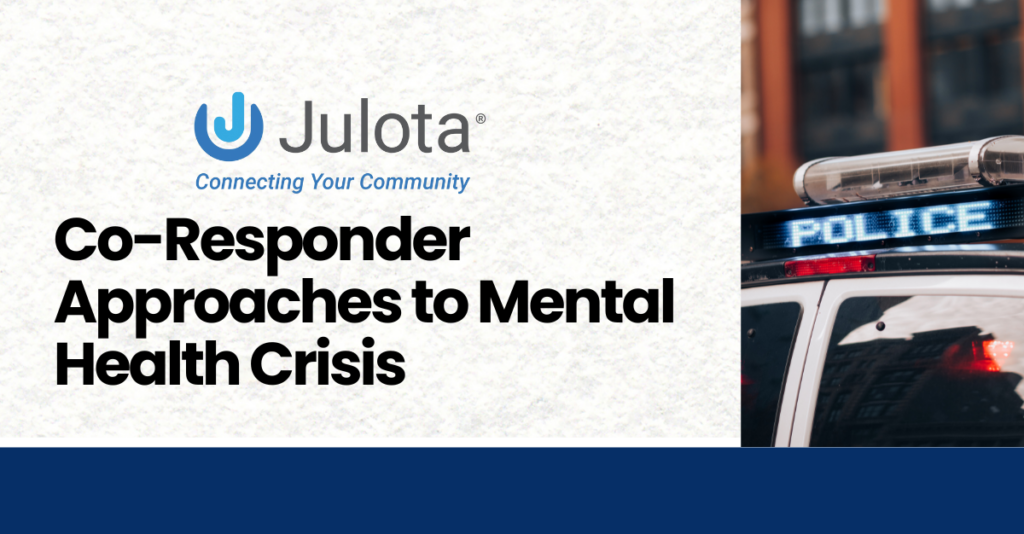Co-responder approaches to mental health crisis response pair law enforcement officers with mental health professionals to handle emergency calls involving individuals in crisis. The practice began in the early 1990s with pioneering efforts in Los Angeles. Initially focused on mental health crises, the model has expanded to address homelessness, substance use disorders, and veteran PTSD crises.
Rather than treating these situations as criminal matters, co-responder teams recognize that public safety and mental health care often overlap. This collaboration helps de-escalate crises, assess individuals properly, and connect them to the right services, reducing unnecessary arrests and emergency room visits.
While many programs have adopted this care model, has it stayed true to its roots in responding to mental health crises?

What Constitutes a Mental Health Crisis?
Almost everyone experiences ups and downs in their mental health. In recent years, anxiety and depression have surged, particularly among younger demographics. However, when a person’s thoughts, emotions, or behaviors escalate to the point where they pose a danger to themselves or others or severely impact their ability to function in daily life, it becomes a mental health crisis. Examples include:
- Suicidal thoughts or attempts
- Severe panic attacks
- Psychotic episodes
- Uncontrolled substance abuse
Challenges in Mental Health Crisis Interventions
Increasing Mental Health Crises
Mental health-related calls to police have surged, with some jurisdictions reporting that such cases now account for 20-50% of all service calls. Emergency departments have become de facto psychiatric crisis centers, exacerbating resource shortages.
Impact on Homeless Populations
Approximately 25% of homeless individuals have serious mental illnesses, creating complex crisis situations. Medication management and therapeutic interventions become challenging without stable housing, leading to repeated crisis cycles.
Key Benefits of the Co-Responder Approach to Mental Health Crises
The co-responder approach offers significant benefits in addressing mental health crises more effectively. It accomplishes this through:
- reducing arrests and emergency room visits
- fostering community trust
- enhancing training for responders
- leveraging technology
This model ensures better outcomes for individuals in crisis.
Reducing Arrests and ER Visits
Research shows that co-responder teams significantly reduce arrests and emergency room visits. In Colorado, between July 2020 and June 2021, co-responder teams avoided arrests in 98% of their calls, handling over 25,900 incidents. These programs alleviate the burden on the criminal justice system while ensuring people receive proper mental health care.
Building Community Trust
People with mental health conditions often hesitate to call for help, fearing punitive responses. Co-responder approaches emphasize treatment-focused interventions, helping build trust between communities and emergency responders. Programs also enhance officer safety through specialized de-escalation techniques.
The Demand for Quality of Care Excellence
Comprehensive training is vital for both law enforcement and mental health professionals. Crisis Intervention Team (CIT) training provides officers with over 40 hours of specialized education on mental illness, de-escalation, and substance use disorders. Mental health professionals also need training to conduct rapid assessments in unpredictable environments and understand law enforcement protocols.
Technology and Data Sharing
Modern co-responder programs leverage technology to improve coordination and outcomes. Mobile crisis apps streamline dispatching, and electronic health records help responders access crucial patient history in real time. Secure data-sharing systems ensure compliance with HIPAA regulations while facilitating better care continuity.
Established Co-Responder Programs and Outcomes
Denver’s STAR (Support Team Assisted Response) program has successfully diverted thousands of mental health calls from law enforcement. Similarly, Eugene, Oregon’s CAHOOTS model handles 20% of 911 calls with a co-responder team, saving an estimated $8.5 million annually.
Cincinnati’s Alternative Response to Crisis (ARC) team responded to over 1,000 calls in just three months, never requiring police backup, showcasing the effectiveness of non-police interventions.
Sheriff Joe Pelle from Boulder County also notes: “Our deputies have come to trust and rely on our co-responders. As a result, local municipalities are providing funding to expand coverage, making this program a big success.”
Key Metrics for Success
Successful co-responder programs measure their effectiveness through:
- Reduced arrests and ER visits
- Increased connections to mental health services
- Higher engagement rates for individuals receiving follow-up care
- Improved community and officer satisfaction levels
How to Boost Co-Responder Success
The influx of technological solutions can enhance these programs from being data reactive to data driven.
Effective co-responder models rely on systematic data collection to measure program success. For example, the Douglas County Co-Responder Unit uses Julota to track response times, diversion rates, jail saves, and service utilization, demonstrating the program’s cost savings and impact.
In Larimer County, Colorado, co-responder programs saved the community $4.9 million between 2017 and 2019 by diverting individuals from unnecessary jail bookings and ER visits.
Future Directions of Mental Health Crisis Support
Integrating the 988 Crisis Hotline with co-responder models is transforming crisis response. Additionally, virtual co-response solutions allow remote clinicians to assist law enforcement in real time, expanding rural access.
AI-driven data analytics help predict high-risk individuals, enabling proactive intervention. Chicago’s co-responder program used predictive modeling to reduce repeat crisis calls by 40%.
Sustainable co-responder programs also require stable funding mechanisms. Federal initiatives, such as the CAHOOTS Act, aim to increase Medicaid reimbursement for crisis response services. State-level funding strategies, like Colorado’s use of marijuana tax revenue, provide reliable financial support for co-responder teams.
Conclusion
Co-responder approaches transform mental health crisis response by fostering collaboration between law enforcement and mental health professionals. These programs reduce unnecessary arrests, improve community trust, and provide individuals in crisis with appropriate care.
Investing in technology, training, and policy frameworks will be key to sustaining and expanding these initiatives as more communities adopt co-responder models. Platforms like Julota provide the digital foundation for effective coordination and long-term success in crisis intervention.
For more information on how Julota can support your co-responder program, visit www.julota.com.